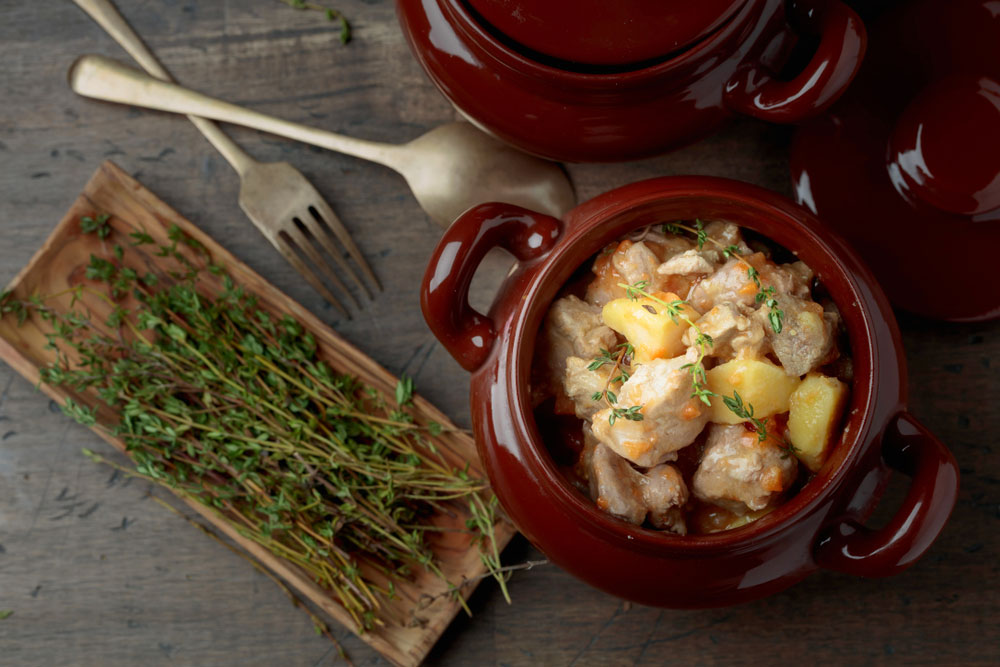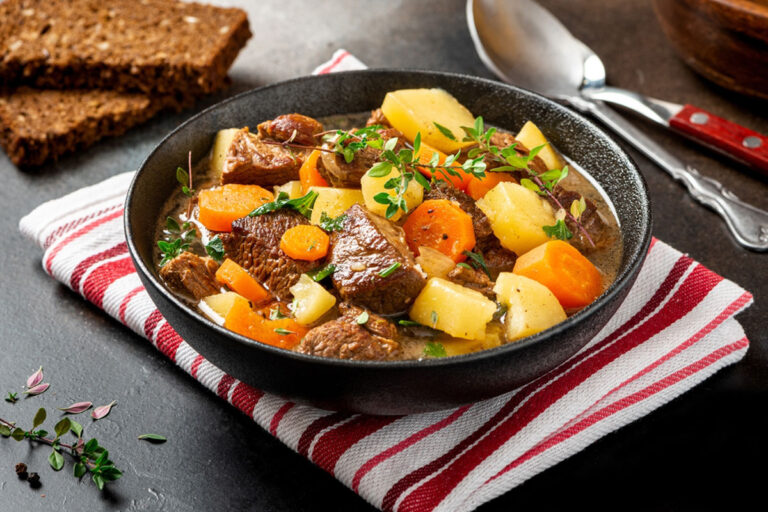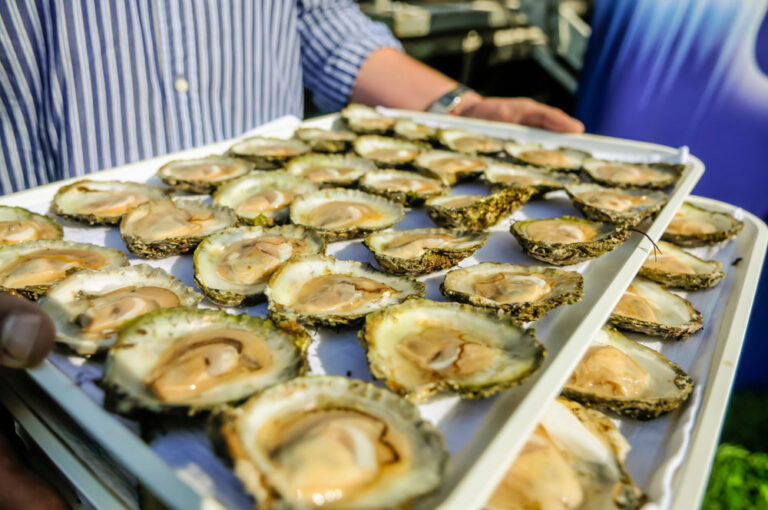The Rich Tapestry of Irish Seasonings
Ireland’s culinary environment is a lively tapestry of flavors, a harmonic blend of history and innovation, and the herbs and spices that have been woven into the country’s food culture for generations are at the core of this tapestry.
At the foundation of Irish cuisine, you’ll find an array of traditional herbs and spices that form the backbone of countless beloved dishes. Thyme, with its earthy and slightly floral notes, adds a subtle complexity to stews and roasts. Rosemary, with its fragrant and pine-like aroma, infuses meats with a hearty, rustic character. Parsley, fresh and vibrant, is the finishing touch to many Irish plates, providing a burst of color and a subtle herbal note.
These herbs and spices are more than just flavor enhancers; they are essential in amplifying the inherent flavors of Irish ingredients, elevating even the most basic dishes to something truly extraordinary. Irish food provides warmth, depth, and character to each meal through the clever and artistic use of these components.
But there’s more to this narrative than just culinary flourishes. In Ireland, these components have a long history and cultural significance. They’re more than just flavors; they’re cultural marks that connect the past to the present. They’re responsible for your grandmother’s stew tasting exactly like your mother’s and now yours. Join us as we peel back the layers of this culinary tapestry, learning about the history, traditions, and continuing appeal of these vital elements, and how they continue to be at the heart of each aspiring Irish home cook’s repertoire. So buckle in and prepare to discover the herbs and spices that have shaped the heart and soul of Irish cuisine.
From Farm to Table: A Look at Some Local Irish Herbs
The Irish have a strong affinity with their cuisine, which is founded in the fertile soil of the countryside. It’s a tradition-rich tie that runs from farm to table.
These herbs represent the essence of Irish food, growing in the verdant fields and gardens that dot the Irish landscape. Consider chives, which have thin green stalks with a faint onion flavor and a hint of garlic. Mint is a ubiquitous sight, brightening up a variety of cuisines with its refreshing coolness. Lovage, a lesser-known treasure, has a flavor similar to celery and parsley, with a mild anise touch.
What makes these herbs particularly unique is that they thrive in Irish soil, drawing their distinct flavors from their surroundings. Each bite is imbued with Irish essence, capturing the soul of the countryside.
But what if you want to recreate this culinary feat in your own home? The good news is that growing these herbs in your garden is not only possible but also extremely rewarding.
Beyond Borders: Exotic Spices in Irish Cooking
The culinary evolution of Ireland goes far beyond its borders, with the Irish embracing a diverse range of exotic spices to enhance their traditional cuisine. This culinary voyage reflects the country’s history of travel and trade, which exposed it to a fascinating world of flavors.
The Irish culinary scene currently includes dishes with global influences. Indian-inspired curries, for example, have an aromatic blend of cardamom, cumin, and coriander, which combine with Irish ingredients to produce a culinary marvel.
Sumac, a Middle Eastern spice, gives a spicy and tangy touch to a variety of recipes, adding an unexpected twist to traditional Irish cooking. Furthermore, the hot African harissa adds flare and excitement to meals, providing a delicious contrast to the rich comfort food that Ireland is famed for.
By introducing these exotic spices into their dishes, the Irish culinary scene has achieved a beautiful fusion of traditional Irish elements with international flair. These spices add a layer of complexity and depth to the rich tapestry of Irish flavors. The result is a feast that not only comforts the soul but also transports the palate to far-flung places, all while celebrating the essence of Irish cuisine.
Mastering the Art of Seasoning in Irish Cuisine
Seasoning is the hidden element that transforms ordinary dishes into unforgettable experiences in Irish cuisine. It’s an art form in which the palette comprises of flavors and ingredients, similar to the strokes of a painter’s brush.
To master this art, you must first understand the essence of salt – how it doesn’t merely add saltiness but magnifies and elevates every other flavor present. The fresh herbs, however, genuinely dazzle the Irish palette. Fragrant rosemary and thyme add an earthy, aromatic note, while exotic herbs like coriander and mint provide fascinating variations. Spices, from the delicate nuttiness of nutmeg to the fiery embrace of pepper, offer a plethora of options. The trick is to know when and how to use them so that they complement rather than overpower.
A Pinch of Creativity: Irish Seasoning Innovations
The world of Irish seasoning is not static; it is a dynamic, ever-changing arena where tradition meets innovation. Irish chefs are pushing the envelope and redefining the art of seasoning. They get their inspiration from world cuisines, experimenting with novel herbs and spices that aren’t typically seen in Irish cuisine. Dishes are seasoned with unusual spices such as smoky paprika, turmeric, and even Japanese furikake, which lend interesting twists to traditional Irish ingredients.
Furthermore, the farm-to-table movement has built a name for itself in Ireland, with a focus on locally grown herbs and spices. Home gardeners are developing new and aromatic types of herbs in addition to standard plants. This trend toward hyper-local and hyper-fresh ingredients gives Irish seasoning depth and authenticity.
As you explore this culinary environment, you’ll learn that Irish seasoning is more than just a question of taste; it’s a reflection of Ireland’s rich history, the ingenuity of its chefs, and a celebration of the different cultures that have contributed to the country’s culinary heritage.
Herbs and spices that make the perfect Irish Stew
The perfect herbs and spices for an Irish stew are those that enhance the natural flavors of the stew’s core ingredients (usually lamb or beef, potatoes, onions, and carrots) without overpowering them. Traditional Irish stews are known for their simplicity, allowing the quality of the ingredients to shine. Here are the key herbs and spices for an authentic Irish stew:
1. Thyme: Thyme is perhaps the most essential herb in Irish stew. It adds a warm, earthy flavor that pairs perfectly with the rich taste of the meat. You can use fresh or dried thyme.
2. Parsley: Flat-leaf parsley is used to provide a fresh, slightly peppery note to the stew. Add it toward the end of cooking for a burst of green flavor.
3. Bay Leaves: Bay leaves impart a subtle, aromatic depth to the stew. Just one or two leaves can make a significant difference in flavor.
4. Salt and Pepper: Seasoning with salt and pepper is crucial to draw out and balance the flavors in the stew. Remember to taste as you go and adjust the seasoning accordingly.
5. Garlic: While not always included in traditional recipes, garlic can be a wonderful addition. Use it sparingly to avoid overpowering the dish.
These basic herbs and spices are all you need to create a classic, delicious Irish stew. They work together to build layers of flavor while allowing the natural tastes of the ingredients to shine. If you’re interested in a modern twist, you can experiment with additional herbs and spices, such as rosemary, paprika, or a dash of Worcestershire sauce, but remember to use them judiciously to maintain the essence of the traditional dish.

Our favorite Irish Stew Recipe
Ingredients:
- 1.5 pounds (700g) lamb or beef, cubed (shoulder or leg works well)
- 4 large potatoes, peeled and cut into chunks
- 2 large onions, roughly chopped
- 3 carrots, peeled and sliced
- 2-3 sprigs of fresh thyme or 1 teaspoon dried thyme
- A small handful of fresh flat-leaf parsley, chopped
- 2 bay leaves
- 2-3 cloves of garlic, minced (optional)
- Salt and black pepper to taste
- 1.5 liters of beef or vegetable broth (homemade or store-bought)
- Butter or oil for browning meat
- Chopped fresh parsley for garnish
Instructions:
Heat a large, heavy-based pot over medium-high heat. Add a bit of oil or butter, and brown the meat in batches until it’s nicely seared on all sides. Remove the meat and set it aside.
In the same pot, add a bit more oil or butter if needed, and sauté the onions and garlic until they become translucent.
Return the meat to the pot and add the carrots and potatoes.
Pour in the beef or vegetable broth until it covers the meat and vegetables.
Tie the thyme sprigs and bay leaves together with kitchen twine to make a bouquet garni, or simply add the dried thyme and bay leaves to the pot. Put them in a small piece of cheesecloth if you prefer to remove them later.
Season with salt and pepper, keeping in mind you can always add more later.
Bring the stew to a boil, then reduce the heat to low. Cover the pot and let it simmer gently for about 1.5 to 2 hours, or until the meat is tender and the flavors meld together.
Check the seasoning, adding more salt and pepper if needed.
Just before serving, stir in the chopped fresh parsley. Discard the bouquet garni if you used one.
Serve hot, garnished with additional fresh parsley, and enjoy your delicious, hearty Irish stew.
This traditional Irish stew recipe showcases the flavors of the meat, vegetables, and the key herbs and spices, creating a comforting and satisfying dish. It’s a perfect example of how simplicity and quality ingredients can result in a wonderful meal.







